Plants ordered now will ship Spring 2026 🙂
Comfrey, Russian (Symphytum x uplandicum) potted plant, organic
Price range: $8.50 through $57.00
Family: Borage (Boraginacea)
Hardy in Zones 4 to 8
Bocking 14 cultivar of Russian Comfrey (Symphytum x uplandicum). Sterile hybrid does not make seeds. Nice potted plants make for an easy transplant. Commonly used in permaculture as a companion plant to fruit trees. In the nursery, we have great results making the fresh leaves into biodynamic tea, which we apply to our plants in a pot to increase vitality, growth, and to green up all those leaves. Excellent ingredient for compost piles–fresh leaves compost fast and make a nitrogen-rich compost. Organic, farm-derived, vegetarian and free of cost. As an animal feed, 26% protein in leaves, rub fresh leaves first to increase likelihood that goats, pigs, etc. will eat it. We have used the fresh leaves to cure scours in goats and rabbits. Traditional usage (TWM): used externally, safely and effectively, to speed healing of any and all lesions of the skin. Source of allantoin. The effects are: cell proliferation, emollient, discutient. Contains pyrrolizidine alkaloids, do not take internally during pregnancy or if suffering from liver disease. Space plants 2 to 3 feet apart.
Potted plant, certified organically grown

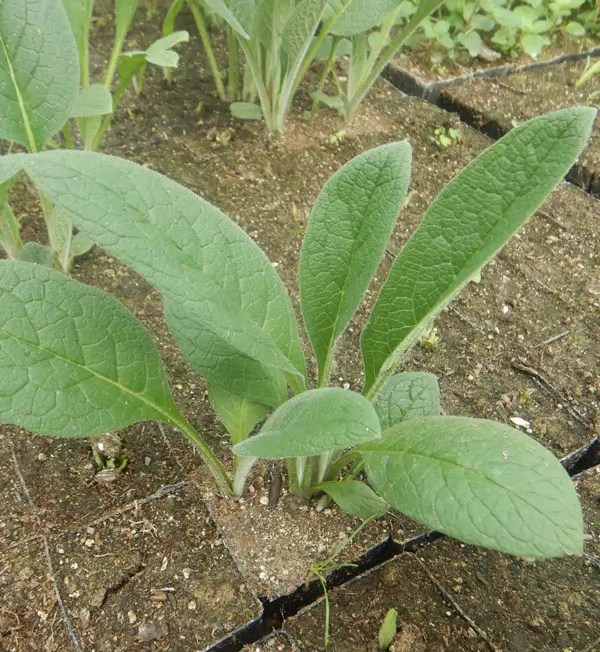
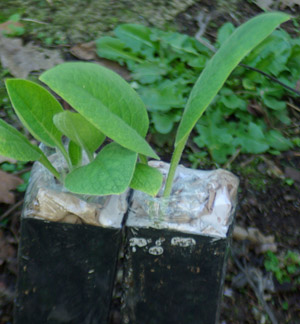
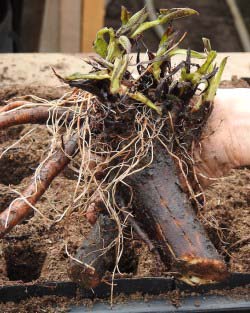
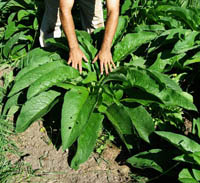

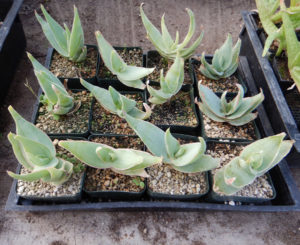
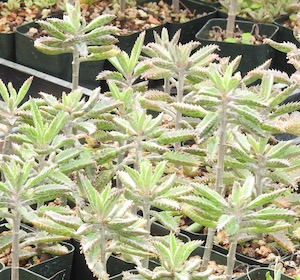
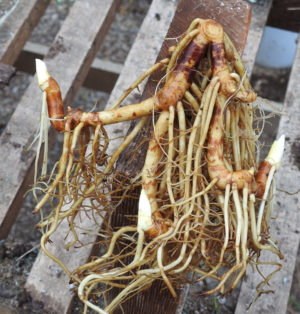
Shar –
Packaged nicely. I ordered 6 crowns I can’t wait to get these planted in the orchard.
Upvote if this was helpful (0) Downvote if this was not helpful (0) Watch Unwatch Flag for removal
Question
Kristinna –
Hello! I am wondering if for herbal medicinal oil making, can the Russian and officinalis are used interchangeably or if one variety was the most potent for medicine making?
Upvote if this was helpful (0) Downvote if this was not helpful (0) Watch Unwatch Flag for removal
Richo Cech –
Hi Kristinna, Thanks for contacting us! Its a relatively complex issue but for all practical purposes the plants are medicinally interchangeable. I do suggest reading the comfrey pages of “Growing Plant Medicine Vol 1” for an in-depth compare and contrast of the true comfrey and the hybrid russian comfrey. richo
Upvote if this was helpful (0) Downvote if this was not helpful (0) Flag for removal
Kristinna –
Will do! Thank you!
Upvote if this was helpful (0) Downvote if this was not helpful (0) Flag for removal
Cindy –
Thank you for asking that question, it was my question also. I ordered the book suggested and I will be ordering some comfrey. Your website is wonderful! Thank you!!!
Upvote if this was helpful (0) Downvote if this was not helpful (0) Flag for removal
Tonya Drayden (verified owner) –
I ordered my Russian Comfrey on 6/19 and the plants arrived at 6/28. The plants are in excellent shape due to the amazing packaging.
Question:
The instructions recommend potting the plants in regular potting mix. The instructions also recommend looking for instructions on your website. Do there plants need a special potting mix?
Upvote if this was helpful (0) Downvote if this was not helpful (0) Watch Unwatch Flag for removal
Richo Cech –
Hi Tonya, Thanks for the high vibes, much appreciated. The comfrey will do fine with a standard potting mix, or even just 100% organic compost. These plants are greedy little beasts, they’ll suck up anything you’ll give them. They can also be planted straight to the garden right now, the gallon pot intermediary is unnecessary with comfrey. richo
Upvote if this was helpful (2) Downvote if this was not helpful (0) Flag for removal
Tonya Drayden (verified owner) –
One more question….
Another website recommends planting the crown of the plants 2-8 inches deep. Is this correct?
Upvote if this was helpful (0) Downvote if this was not helpful (0) Flag for removal
Richo Cech –
Hello Tonya, The root cutting should be buried deeply, completely covered by dirt. it doesn’t really matter specifically how deep it goes, but 2-8 inches is fine. However you’re leaving this comment on the POTTED PLANT item, so if you got a potted plant from us, plant the roots down in the dirt and leave the aerial portions going up into the air. Leave the crown of the plant at surface level, the same level as it is in the pot. Richo
Upvote if this was helpful (1) Downvote if this was not helpful (0) Flag for removal
Deborah Carnathan (verified owner) –
Just got my Russian Comfrey order! The plants look great and were packaged so well. So glad I found this website! Will absolutely be ordering in the future.
Upvote if this was helpful (0) Downvote if this was not helpful (0) Watch Unwatch Flag for removal
Question
Andrew Green –
What is the preferred method for making comfrey tea? I have frequently added it to compost but would like to try it in tea form for plant health as well.
Thanks as always for all the excellent advice, seeds and plants. You provide such an important resource and are much appreciated!
Upvote if this was helpful (1) Downvote if this was not helpful (0) Watch Unwatch Flag for removal
Richo Cech –
hi andrew, my pleasure, thanks for writing. you know, usda recently removed KELP from the approved list of amendments, which makes comfrey all the more important in this context. making comfrey leaf sun tea is cheap, easy and super effective. fill a bucket or barrel with fresh leaves, add water to the brim and allow to soak in the sun. stir daily. at first it will be hard to stir and after a few days as the leaves break down stirring will get easier. after the leaves literally melt back into the tea, after a week or so, pour off through a filter. drape cheesecloth over a tripod and set up a bucket to collect the filtered tea. dilute with plenty of pure water before using it to water in transplants, nursery stock, row crops, soak cuttings, stimulate seeds, etc. r
Upvote if this was helpful (1) Downvote if this was not helpful (0) Flag for removal
Question
Kathy –
Since the Russian variety does not produce seeds, can it be reproduced by divisions or would I be better off to use the other variety?
Upvote if this was helpful (1) Downvote if this was not helpful (0) Watch Unwatch Flag for removal
Richo Cech –
hello kathy, yes, the russian comfrey can be reproduced by means of root (crown) cutting. These are very dependable. richo
Upvote if this was helpful (3) Downvote if this was not helpful (0) Flag for removal
Question
Jaclyn –
Does Russian comfrey produce flowers? Thank you
Upvote if this was helpful (1) Downvote if this was not helpful (0) Watch Unwatch Flag for removal
Richo Cech –
hi jaclyn, it does, and they’re pretty nice, bell-shaped, lavender, generous. richo
Upvote if this was helpful (2) Downvote if this was not helpful (0) Flag for removal
Question
Scott –
I understand Russian Comfrey (Symphytum x uplandicum) is commonly used in permaculture as a companion plant to fruit trees, whereas (True Comfrey) (Symphytum officinalis) is used for animal feed and external applications. Is there a comfrey that can be used internally by humans? If so which one? Can the Russian variety be used medicinally when applied externally or is it medicinal at all?
Upvote if this was helpful (0) Downvote if this was not helpful (0) Watch Unwatch Flag for removal
Richo Cech –
Hi Scott, Thanks for your considered questions. There is a ton of anti-comfrey propaganda out there which goes completely counter to the ages-proven truth that this is a safe and effective remedial. In short, either type (russian or true) comfrey may be applied externally with good healing effect and without fear about pyrrolizidine alkaloids. It is not a good idea to eat a lot of comfrey or make strong tea and drink it every day. It is, after all, a first aid plant, so it is not normally used like a daily tonic. True comfrey (Symphytum officinale) is lower in total alkaloid content including echimidine, so in answer to your question, if comfrey is to be taken internally for a course of treatment, I recommend the true. Don’t use it if you’re pregnant or suffering from liver disease. Russian comfrey (Symphytum x uplandicum) is a faster grower and is commonly used for fodder, sun tea for fertilizing plants, compost making and as a companion plant in the orchard. r
Upvote if this was helpful (1) Downvote if this was not helpful (0) Flag for removal
Question
Joyce (verified owner) –
Is comfrey good for pest control in organic gardening? I have heard be invasive so which variety to avoid it taking over my garden?
Upvote if this was helpful (0) Downvote if this was not helpful (0) Watch Unwatch Flag for removal
Richo Cech –
Hello Joyce, Comfrey isn’t well known for insect pest control. Nothing much bothers it, if that’s what you mean. Comfrey is most useful in organic orchards to limit certain diseases that affect fruit trees, also to nourish them, and when used in horticulture (like for making comfrey tea) it exerts a gentle stimulation to plants as the proteins break down into nitrogen which plants need for healthy growth. As a medicinal herb, unparalleled, really, due to the presence of healing allantoin. Most people use it externally only, due to the pyrrolizidine alkaloids, which make the herb be not as choice for internal use. As for invasiveness, the main invasive species is Homo sapiens and sometimes the not so sapient homos do find them spreading throughout the garden. Smart gardeners create a comfrey patch and leave it alone without disturbing it (like rototilling through it, a sure way to spread it around!) and then the plants stay put and really create quite a show around midspring with the bees drinking nectar from the flowers and so forth. Since true comfrey makes seeds that can spread and russian comfrey does not, then if you’re concerned about the spread of the plant, get the russian comfrey. That was where this comment occurred. Richo
Upvote if this was helpful (0) Downvote if this was not helpful (0) Flag for removal
Rita McCartt-Kordon –
Hello in Oregon!
I have really enjoyed my Comfrey plants. So have my Honeybees! I’m a little late on this review, because it has been a while since I ordered them! Nonetheless, I’m very well pleased with them! Thank you!
Upvote if this was helpful (0) Downvote if this was not helpful (0) Watch Unwatch Flag for removal
Admin Richo Cech –
Thanks, no prob, our # 1 choice medicinal herb, none more universally useful and effective!
Upvote if this was helpful (0) Downvote if this was not helpful (0) Flag for removal
Katherine Rhodes (verified owner) –
Thanks Richo. Plants are ordered as well as 3 of your book. My daughter has bought the 4th for me as a birthday gift.
Upvote if this was helpful (0) Downvote if this was not helpful (0) Flag for removal